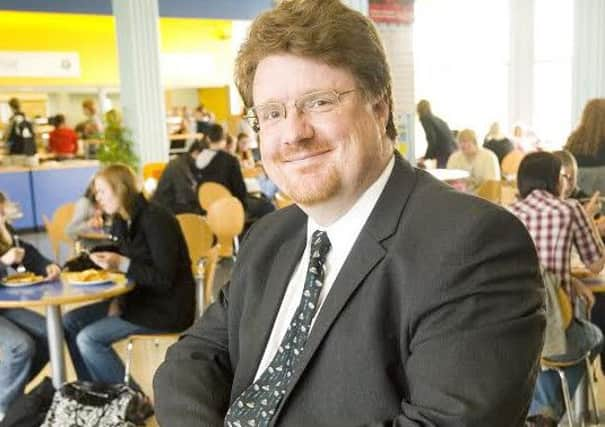GUEST COLUMN: IT in education is more than just rows of computers, by Gavin Peake, director of IT at West Notts College


When it comes to IT in education, people tend to imagine students sat in rows, working on computers. Although PCs remain vitally important, students and staff now enjoy access to a rapidly-expanding range of other technologies.
All our classrooms and workshops have touchscreen TVs or interactive SMART boards, while video on-demand facilities allow tutors and students to select from thousands of hours of recorded content to support their lessons. Every room in our new higher-level skills centre is equipped with lesson-capture technology, so classes can be recorded and played back by students.
Advertisement
Hide AdAdvertisement
Hide AdWhen students log on to a PC, the first thing they see is an interactive ‘dashboard’ which captures every piece of information they need for their course. Lesson timetables, targets, course materials, records of work experience or volunteering activities, and money held on their digital ID card for lunch or snacks is all in one place – and even available via smartphones, tablets and laptops.
Curriculum areas use technology in a variety of practical ways. Computer-aided design (CAD) is now standard practice in our engineering centre, where 3D printers are used to quickly produce prototypes. Similarly, electronic diagnostics and simulation software help motor-vehicle students experience the full range of faults they might encounter in an actual garage. In music and performing arts, computers are used to record what has been played, while industry-standard Apple Macs are used for graphic design and animation. In our TV and radio studios, all the output is recorded and edited using sophisticated digital techniques.
Almost every lesson has additional study material available on our online system, which can be downloaded at college or at home to help students practice and learn. We have 100 per cent Wi-Fi coverage and encourage students to bring their own devices into college. We also loan laptops and tablets so they can study anywhere, and anytime, they want to. Every campus has a learning centre that combines a library with a drop-in computer facility, staffed by qualified librarians to help students with their research. While these continue to provide books and magazines, last year almost as many e-books were read by our students as printed versions. We expect this to grow as thousands more become available each year.
So, education in the 21 st Century is definitely much more than just rows of computers! The exciting reality is that cutting-edge technologies are now firmly-embedded in all aspects of teaching and learning – richly benefitting learners and tutors in so many different ways.